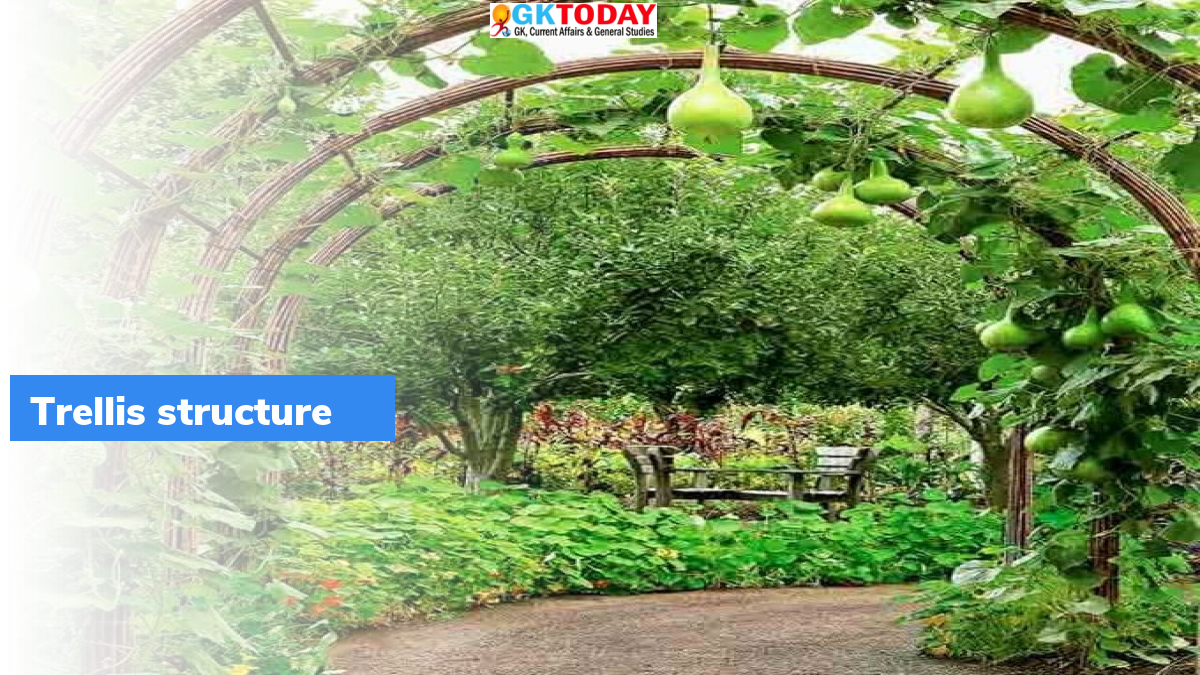What is a ‘Trellis structure’?
Trellis structure is an architectural structure made from a lattice of interwoven pieces of any material like wood, bamboo, or metal.
Uses of Trellis structure
- Trellis structure can be used to cultivate climbers and creepers like bitter gourd, pointed gourd, cowpea, beans, etc. It is especially useful in viticulture (Cultivation of grapes).
- In Europe, trellis structure is commonly used for a climbing rose varieties, as they require a trellis structure to reach their potential as garden plants. As the trellis structures are aesthetically appealing, they can be used for decoration purposes, growing ornamental plants, etc.
Innovative farming using Trellis structure
- Trellis structure for cultivating creepers is widely adopted in a tribal village called Akhapolan, located in Thakurmunda block of Mayurbhanj district, Odisha. The village is located close to Similipal National Park.
- In this village women were trained to cultivate vegetables using a trellis structure. Women from one-third of households in the village adopted this system and are reaping profits.
- Women prepared trellis structures using pillars, bamboo poles, and ropes. The plants will climb vertically with the help of bamboo poles and ropes. Department of Horticulture provided Rs 12,550 for each household to encourage the adoption of trellis structure.
Climate resilience
- Trellis system is an effective tool for climate-resilient agriculture. Due to climate change, rainfall has become erratic and we are often witnessing unseasonal rainfall and flash floods. This leads to water stagnation and destroys the creepers.
- In the trellis system, creepers have better chances of survival compared to those grown in a flat-bed system. This is because, in the trellis system, plants grow vertically, and thus rotting of the plant can be avoided when water stagnates on the ground.
Other advantages
- Adequate spacing between plants provided in the trellis system will enhance the utilization of nutrients, water, sunlight, carbon dioxide, and oxygen.
- Pests and disease control will become easy as there will be adequate ventilation. Thus, there will be a higher yield in the trellis system compared to the flat-bed system.
- Quality produce can be harvested free from soil contamination. Also, in this system, weeding, staking, harvesting, etc. is easier, so the cost of cultivation reduces.
Thus, the trellis system has numerous benefits and is emerging as a sustainable alternative to traditional farming systems.
Month: Current Affairs - March, 2022
Category: Environment Current Affairs


